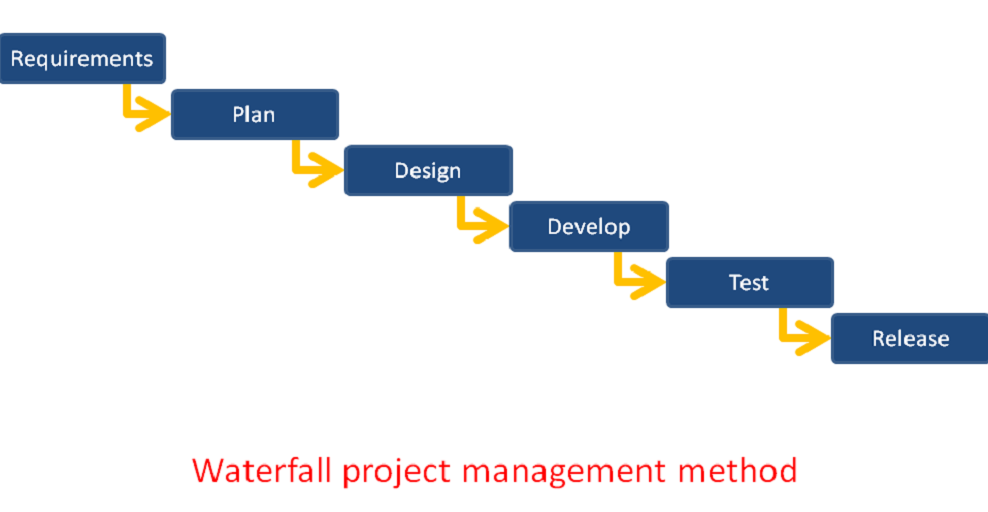What Is Waterfall Project Management Methodology?
The success of any project depends on its life cycle and management methodology. All the projects consist of a team, a certain schedule, an allocated budget, and a pre-defined set of conditions or expectations, the project team needs to fulfill.
Project management is defined as the process of managing the work of a team, to achieve all defined project goals within the given constraints. The process of project management is undertaken through various methodologies. One of them is Waterfall Project Management Methodology.
What is Waterfall Project Management Methodology?
The Waterfall Methodology is the sequential process of project development. It is the approach, under which a project is completed in well-defined stages. Under the Waterfall Model, the project goes ahead step by step towards its completion and release.
The sequence of the project development process consists of the phases such as concept, design, development, execution, testing, and so on. Each phase is completed thoroughly before the next phase starts.
The waterfall method is extremely effective if all the factors are on the right track. These crucial factors include the amount of the performance, quality of the performance, documentation, prominent features of the documentation, such as user experience, user interface, and more.
Stages in Waterfall Project Management Method
The waterfall method has a linear, chronological process, which is based on certain requirements, dates, and results. During this project management method, the teams are self-reliant and work independently. The five stages in Waterfall Project Management Method are as follows.
Requirements
Under this stage, all the needs are analyzed and requirements are gathered. These requirements include documents, costs, risk factors involved, dependent variables, success metrics, and expected timelines.
Design
Under this stage, the problem is analyzed and the software developers design a technical solution for it. Appropriate technology is chosen, diagrams are created and the software architecture is planned. The solution is based on factors such as scenarios, layouts, and data models. Then the design is created physically.
Implementation
After the completion of the design, the process of technical implementation begins. The research and design are already in place, so this phase may take a shorter time. According to the requirement of the project, the programmers write codes. Some basic testing is done and the design is implemented. Changes are done if required.
Testing
Before the product is delivered to the customers, testing is imperative. It ensures that the product is error-free and ready to perform its best. The tests are conducted by the testing team to check the product efficiency.
Maintenance
AS the product has been released to the customers, the stage of maintenance starts. The defects are identified if any. If the users have any change requests, they are taken into consideration. Expert teams are assigned to update the software and deliver its revised version.
To understand the competition better, before you apply the waterfall method, you can use Porter’s Five Forces Model.
Porter’s Five Forces Model
Porter’s Five Forces Model is a powerful tool that helps you identify the main sources that make the competition in your business vertical. These five forces are
- Threat of new entrants
- Threat of substitutes
- Bargaining power of customers
- Bargaining power of suppliers
- Competitive rivalry
When you have insights into your competition, you’ll be able to strategize and grow better.
Benefits of the Waterfall Project Management Methodology
- It is a clear, well-defined methodology with a proven track record. Each of the team members is aware of his or her tasks and plans accordingly.
- Comprehensive documentation is created during the waterfall method.
- The created research or knowledge is retained in the organization. It can be useful for other employees and other tasks as well.
- If facilitated good time management of the employees.
- The waterfall phases are easy to understand.
- The method makes the client aware of the cost, the timeline, and product type, well in advance. The client is able to plan accordingly.


